The words “strength training” tend to strike fear into many hearts.
The resistance area is a foreign land for many who would rather stick with comforts and safety of the cardio area.
This article will serve as the ultimate guide to strength training exercises for beginners. It will explain what strength training is, why we do it and finish by highlighting six essential strength exercises.
What is Strength Training?
Strength training does tend to conjure up thoughts of muscle-bound men grunting and throwing heavy weights around the gym.
Yet, strength training can come in a number of shapes and sizes. Bodybuilding, powerlifting, calisthenics, plyometrics, circuit training, and even yoga are all examples of strength training.
Any activity that places resistance onto a muscle to bring about a contraction can be considered a strengthening exercise.
Conventional strength training uses loaded resistance such as fixed weight machines, barbells, dumbbells, kettlebells, and cables.
By loading muscles frequently, they will respond by increasing in strength, size, and endurance.
Strength training may be performed for a variety of reasons such as muscle gain, injury prevention or improved athletic performance.
As a result, there are a number of different strength training techniques that use different rep schemes.
Typically, heavy weight and low reps are used for maximal strength gains. Light-moderate loads and high reps are utilized for muscle growth and muscular endurance improvements.
Why Strength Training?
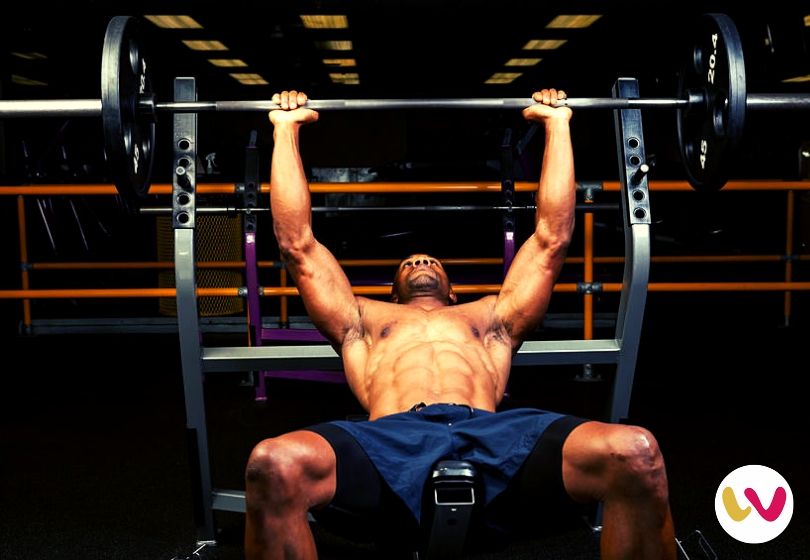
Over the past decade or two, strength training has become more popular. Thankfully, the idea that it is just for bodybuilders and athletes is slowly fading.
Such are the benefits of strength training, it is recommended that everyone regularly participates in some form of strength training.
Benefits On The Musculoskeletal System
Let’s firstly take a moment to consider the function of muscle. Muscles contract in order to bring about control and movement of the body.
Therefore, by building strong muscles through strength training, these movements will become a lot more powerful and efficient.
Building strength can help with a number of daily activities – ones that we might not even think about.
Walking, taking the stairs, carrying heavy bags, opening stiff jars, pushing open heavy doors, and gardening. These basic activities can all become easier as a result of strength training.
Additionally, many people suffer from postural issues that often result from how they move or fail to move.
Nowadays, many jobs involve sitting at a desk all day. This can wreak havoc with posture, particularly if good posture is not maintained.
Shoulders tend to gradually move forwards causing the upper back to round. Also, the hamstrings tend to tighten which can lead to lower back issues.
Strengthening specific muscles and building full-body strength can help to rectify any existing postural issues (1).
Strength training can also be used to cause changes in body composition.
Providing that nutrition is on point, strength training can cause muscles to grow significantly in size and definition.
Strength training is also important in weight loss. Exercise sessions can contribute towards a calorie burn while helping to retain muscle size and strength.
As well as developing muscle, regular strength training impacts bone density. This refers to the amount of bone mineral found in the bone itself.
There have been many studies to indicate that bone density increases with strength training. It has even been found to positively impact bone-wasting conditions such as osteoporosis (2).
Nervous System
As well as impacting the musculoskeletal system, strength training also causes the nervous system to change.
The nervous system is a complex collection of nerves that transmit signals around the body to coordinate movement.
When learning a new skill, something known as a neural pathway is established. This is basically a brain-body connection, which is often referred to as muscle memory.
When this connection is made, movements become almost second-nature. But it can take time for these pathways to be made.
The best example that can be used to highlight this is a toddler learning to walk.
When they finally get on their feet, they spend the first few months stumbling about like a drunk old man. Over time, muscle memory improves and so does their walking.
Now as fully grown adults, we don’t even have to think about walking, we just do it.
Learning and practicing strengthening exercises regularly will improve muscle memory and enhance proprioception and strength.
Proprioception is the scientific terms for the body’s understanding of its position and movement. The term encompasses skills such as balance, coordination, and stability.
Performing an array of exercises can challenge our proprioceptive abilities and bring about adaptation.
It is well documented that beginners often experience a rapid strength increase, which is sometimes referred to as “newbie gains”.
This can primarily be attributed to new neural pathways and improved proprioception (3).
Athletic Performance and Injury Prevention
All of the world’s best athletes strength train. Period.
Most sports require a large degree of strength, power, endurance, balance, coordination, and stability.
By spending time in the gym, athletes can fine-tune these key components and give them the edge over their opponent.
Therefore, for those who participate in sport, strength training is an absolute must.
Leading directly on from athletic performance, strength training can help to reduce the risk of sustaining an injury.
Nobody likes getting injured and for those who are highly active or play sport, getting injured can be devastating.
However, considering how strength training improves muscle strength, bone strength, and nervous system efficiency, injury risk can dramatically fall (4).
However, if an injury ever does strike, guess what? Strength training will help to rehabilitate the injured site.
Strength training truly is a powerful tool; one that we should all be using.
What Are The Best Strength Training Exercises For Beginners?
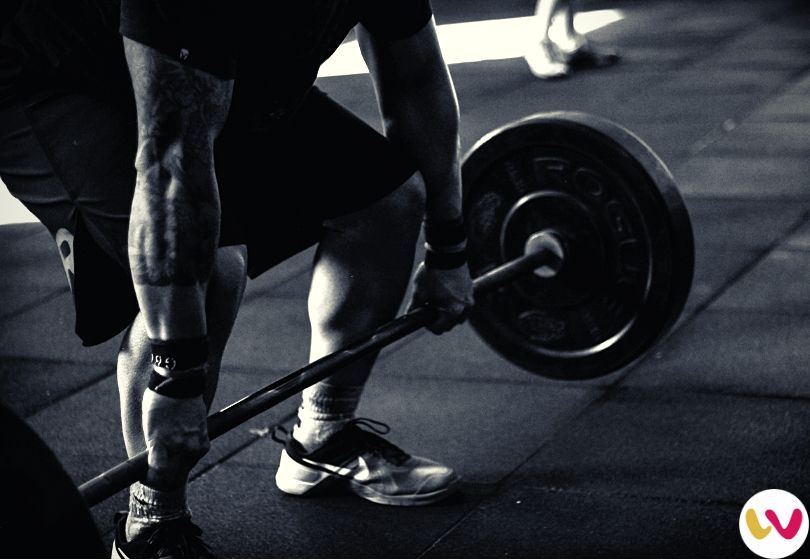
For those who have never been into a gym before, it’s very difficult to know where exactly to start.
Before we even consider specific exercises to perform, there are a couple of considerations that should be made first.
Beginners do not need to worry about lifting extremely heavy weights at this stage. Instead, the focus should initially be on learning the movements.
Remember, the nervous system will not be accustomed to strength training exercises and movements will initially feel shaky and unstable.
Therefore, combining this with heavy weights is a recipe for disaster.
As a beginner, it is possible to stimulate significant changes by using light-moderate loads.
Because the body has never experienced a strength training stimulus before, it will rapidly adapt.
The reason for this adaptation is so that the body can deal with the stress of exercise should it experience it again. The body really is a clever machine!
The second consideration that should be made is the type of exercise and equipment that we use.
There are two types of exercise – compound and isolation.
Compound exercises recruit a number of muscles and joints. Isolation exercises focus on just one muscle and joint.
As a beginner, compounds should be prioritized as they have the potential to bring about the biggest change.
What about equipment?
There is a real debate about whether free weights (dumbbells and barbells) are superior to weight machines.
Both have their pros and cons.
Free weight exercises require strength and stability and often recruit more muscles than machines do.
Weight machine exercises are easier to master as the need for stability is reduced. More weight can typically be lifted as a result.
Because weight machines tend to be easier to get to grips with, some suggest that they are better for beginners.
While they may be useful initially for laying the foundations, free weights will challenge the body to a greater degree.
Six Essential Beginner Exercises
Keeping these considerations in mind, the following six exercises are compound, free weight exercises. There are three upper and three lower body exercises listed.
The exercises have been selected due to the high demand they place on the musculoskeletal and nervous system.
By performing these exercises regularly, we can bring about optimal changes in full-body strength and movement.
1. Squat
(video credit: Barbell Shrugged)
Squatting will develop the leg and core muscle strength. The movement specifically targets the quads and glutes.
It is a fundamental human movement that we perform on a daily basis. For example, when we sit down we perform a squatting movement.
Squat Coaching Points:
- Start with feet slightly wider than hip-width and point the toes out
- Lift the chest, pull the shoulder blades together and squeeze the core
- Flex at the hips and knees to drop the backside down towards the floor
- Once descended, push hard through the heels to drive back up to standing
For the beginner, start with a bodyweight squat before progressing onto a goblet squat. For the goblet squat, grab a dumbbell, pin it tight to the chest and squat.
Once proficient with the goblet squat, consider moving on to the barbell squat.
2. Deadlift
(video credit: Barbell Shrugged)
The deadlift is a superb developer of the posterior chain. This chain of muscles includes the glutes, hamstrings, calves, lower back, lats, and traps.
The deadlift movement is fairly challenging so be willing to spend time on learning the technique first. If technique is poor, the risk of injury to the lower back may be increased.
Deadlift Coaching Points:
- Start with feet directly under the hips and turn the toes out slightly
- Lift the chest, pull the shoulders back and down and engage the core
- Focus on pushing the hips back and bend slightly at the knees
- Grip the weight tightly and drive hard through the heels to stand
- Squeeze the glutes together tightly before reversing the movement
Initially start with a light dumbbell or kettlebell deadlift. Once the technique is well drilled, consider moving onto a barbell deadlift.
3. Lunge
(video credit: Barbell Shrugged)
The lunge is a single-leg developing exercise that activates the quads and glutes most highly.
Considering the position that the lunge places the body in, balance and stability can be challenging. Therefore, maintain a core squeeze throughout the movement.
Lunge Coaching Points
- Start with feet directly under the hips with toes pointed forward
- Lift the chest, pull the shoulders back and brace the core
- Take a step forward and bend both knees so the back knee drops towards the floor
- Focus on driving hard through the heel of the leading leg to propel the body back up
- Alternate leg and repeat
As with the squat, start with bodyweight before progressing onto a dumbbell and then a barbell lunge.
4. Bench Press
(video credit: Barbell Shrugged)
For optimal chest development, the bench press should be performed. The exercise places the greatest stress on the pecs and deltoids.
Although consider an upper body exercise, remember to engage the quads and core too. This will increase stability and potentially improve performance.
Bench Coaching Points:
- Lie back on a bench and place the feet flat on the floor at hip-width
- Lift the chest, squeeze the core muscles and push the heels into the floor
- Unrack / lift the weight so that it sits directly over the chest
- Drop the weight down to the lower portion of the chest
- Drive the weight powerfully up so that it returns to the starting position
For the bench press, begin with light dumbbells and focus on technique. Once proficient, move onto the barbell bench press.
5. Bent-Over Row
(video credit: Barbell Shrugged)
For developing the back, the row is one of the best exercises around. It effectively develops the lats, rhomboids, traps and rear deltoids.
The bent-over variation of the row detailed below requires the body to be held in a hinged position. This requires a great degree of core strength and stability.
Bent-Over Row Coaching Points:
- Place the feet under the hips and stand tall with the weight in hand
- Keeping the core tight, lift the chest, push the hips back and hold a bent-over position
- Keeping the shoulders down and elbows tight, pull the weight into the body
- Squeeze tightly between the shoulder blades before reversing the movement
Start with light dumbbells and gradually progress onto heavier weights. To progress the exercise further, move onto a barbell bent row.
6. Overhead Press
(video credit: Barbell Shrugged)
The overhead press is the ultimate shoulder building exercise. The movements involved place a demand on the deltoids as well as the core.
Often when fatigue sets in, the hips begin to move out of position. Concentrate on keeping the core and glutes tight throughout the set to prevent this.
Overhead Press Coaching Points:
- Place the feet beneath the hips, stand tall and bring the weight up to shoulder height
- Lift the chest, brace the core and squeeze the glutes
- Powerfully drive the weight directly overhead
- Control the descent of the weight back down to the shoulders
As with the previous upper body exercises, begin with light dumbbells and progress through to a barbell overhead press.
The Importance of Progressive Overload
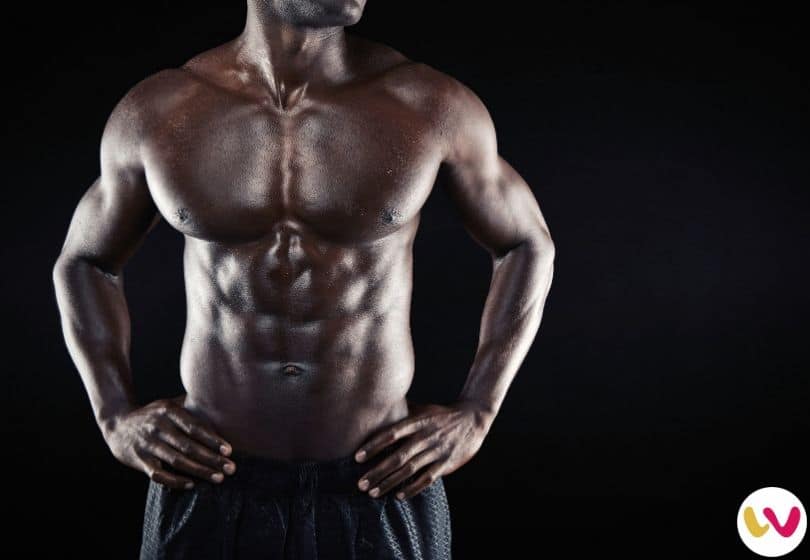
Earlier, we talked about how clever the human body is as it adapts to deal with the stress of training.
Well, if we want to optimize improvements, it’s essential that we continually stress the body.
If we always exercise at the same intensity, the body will fail to adapt further. This is because it has adapted to the point that it can now comfortably deal with the stress.
To ensure that we continue to make progress, we must apply a principle known as progressive overload (5).
This is simply making our training sessions harder over time. By doing this, we will gradually increase the stress placed on the body which will continually force it to adapt.
There are several ways that we can apply progressive overload.
The most common method is to gradually lift more weight as the weeks go by. However, adding reps, sets and reducing rest periods are all effective overload methods.
The key to progressive overload is to make to be very gradually. Far too often, people jump weights too quickly and end up hurting themselves.
As a beginner, use the following recommendations:
- Squats & Deadlifts
Maximum 5kg increase per week - Upper Body Exercises and Lunges
Maximum 2.5kg increase per week
Do not increase the weight if the programmed reps cannot be completed. Stick with the same weight until all reps can be completed before upping the weight.
If the weight hasn’t been increased for a number of weeks, use another overload method. Add one or two additional reps, perform an extra set or reduce the rest time by 30 seconds.
Providing progressions are gradual, strength will have no choice but to sky-rocket.
The Final Word
Strength training is the key to unlocking incredible improvements in strength, movement, performance, and health.
An exercise regime that incorporates the six essential beginner exercises and progressive overload are destined to succeed.
Remember, beginners are in a privileged position where gains tend to come thick and fast. Make the most of it!
References:


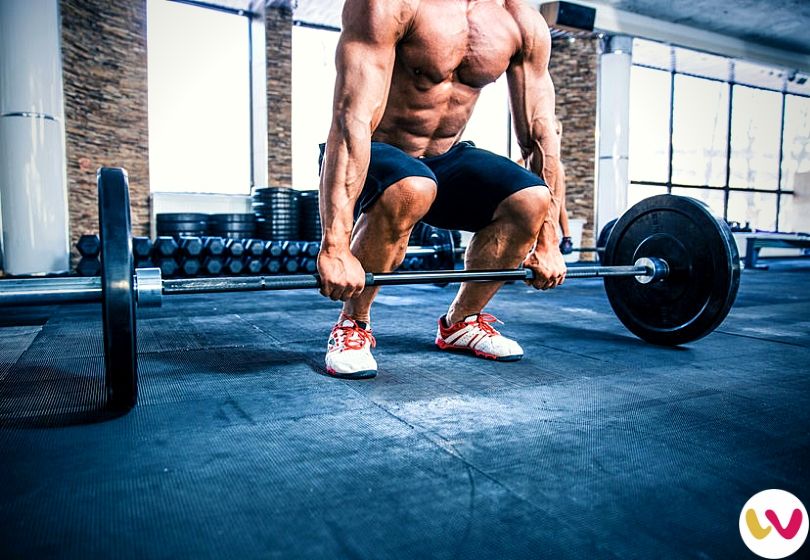
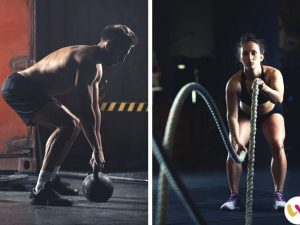

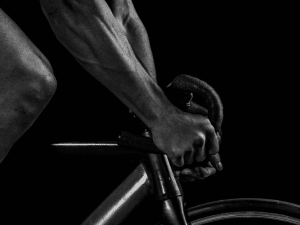


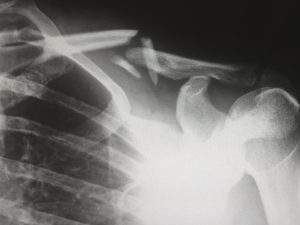
Add Comment